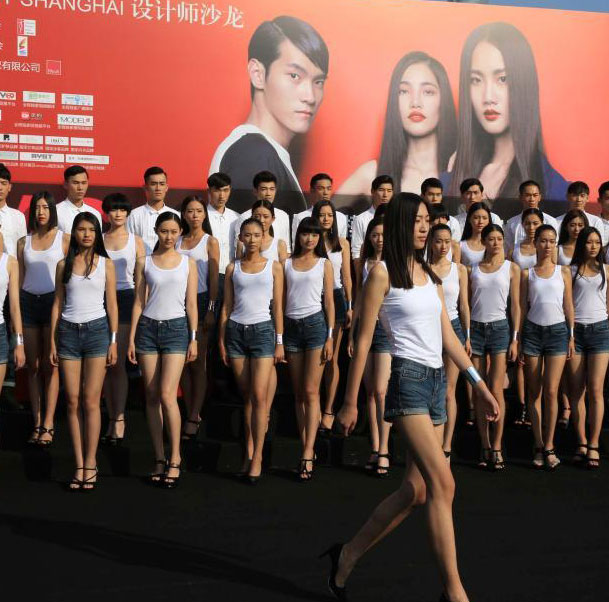 Get off at the last stop — Beijing Subway in vision
Get off at the last stop — Beijing Subway in vision
 Top 100 beauties in the world!
Top 100 beauties in the world!
 Gallery: Who is the most beautiful one?
Gallery: Who is the most beautiful one?
 If you like autumn, put your hands in the air!
If you like autumn, put your hands in the air!
 Fan Bingbing's "Queen style" in new play
Fan Bingbing's "Queen style" in new play
 Lingerie show at 2014 Miss China
Lingerie show at 2014 Miss China
 J-10 fighters show aerobatic stunts in smog-free sky
J-10 fighters show aerobatic stunts in smog-free sky
 Charming contestants of Shanghai Int’l Model Contest
Charming contestants of Shanghai Int’l Model Contest
 Most amazing chi-pao beauties
Most amazing chi-pao beauties
 7 deadly animal attacks
7 deadly animal attacks
The 22nd informal Asia Pacific Economic Cooperation(APEC) informal economic leaders' meeting was held in Beijing on Nov.10 and 11, 2014. The world eagerly anticipated the achievements of the meeting.
Unlike the US-led 12-member Trans-Pacific Partnership (TPP), which excludes China, and the ASEAN-led 16-member Regional Comprehensive Economic Partnership (RCEP), which excludes the U.S., the proposed FTAAP is a wider free trade initiative encompassing all of the 21 APEC economies.
The idea to establish FTAAP was first put forward in 2006. In 2010, APEC was established as an incubator of FTAAP in Yokohama.
With too many trade arrangements in the Asia-Pacific region, 2014 Beijing APEC set itself a clear vision of rationalizing the tangle of agreements. Compared with existing trade arrangements, FTAAP is a more balanced, generous and comprehensive approach to take into developed countries including the U.S. and Canada as well as developing countries like Peru and Papua New Guinea.
Although bilateral and mini-multilateral trade arrangements are more flexible and targeted, such arrangements are not capable of supporting development across the whole region. FTAAP is a mutually beneficial approach to integrating existing trade arrangements in the region.
Some worry that FTAAP will provoke competition for the dominant role in free trade affairs. However such worries seem groundless, as this free trade area proposal represents a wide range of interests in the region.
The article is edited and translated from《“北京方案”提升亚太区域一体化(望海楼)》, source: People's Daily Overseas Edition
 Top 10 most dangerous jobs in the world
Top 10 most dangerous jobs in the world  Top 10 fifth generation jet fighters in the world
Top 10 fifth generation jet fighters in the world Top 10 Chinese goddesses
Top 10 Chinese goddesses  Top 20 hottest women in the world in 2014
Top 20 hottest women in the world in 2014 US self-belief not a model for China
US self-belief not a model for China China’s halal food exporters struggle with ideological, trade barriers
China’s halal food exporters struggle with ideological, trade barriers HK protest leaders arrested
HK protest leaders arrested How prostitution rings hijack your cellphone
How prostitution rings hijack your cellphoneDay|Week|Month